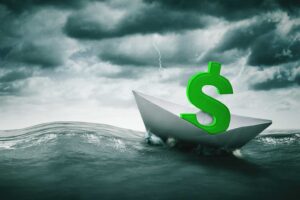Shares of Target Corp. soared 11.4% Tuesday after the discount retailer reported fiscal fourth-quarter profit that was well above expectations, as lower markdowns and lower shrink costs boosted margins.
But consumer outlook remains mixed, according to Christina Hennington, Target’s
TGT,
chief growth officer. “While there are some encouraging signs in the economy, there are also stubborn pressures impacting families and retailers,” she said during a conference call to discuss the results. “Consumers say they still feel stretched, they are balancing a lot and having to make trade-offs to meet their needs of their families, while sprinkling in the occasional luxury.”
She added: “And yet their affinity for style and newness, plus early signs of disinflation, contributed to a sequential uptick in discretionary-category performance over the last two quarters, something we aim to build on and accelerate. At the same time, we expect consumers will remain highly value conscious, hunting for great promotions and seeking comprehensive value in their purchases. Consumers are also craving stability, with small doses of everyday joy,” she said.
“After the volatility of the global pandemic, they are now coping with geopolitical tensions, social and political divisiveness and uncertainty around personal finances,” Hennington said.
Related: Target saw strong foot traffic in 2023 but a sharp dip in January, research says
The stock is heading for the biggest one-day gain since it soared 17.8% on Nov. 15, when the company reported third-quarter results.
In a statement, the company said maintaining “appropriate inventory levels” helped increase profitability, as it resulted in lower markdown rates, stronger in-stock measures and reduced inventory-related costs.
Net income for the quarter that ended Feb. 3 rose to $1.38 billion, or $2.98 a share, from $876 million, or $1.89 a share, in the same period a year ago. Excluding nonrecurring items, adjusted earnings per share of $2.98 beat the FactSet consensus of $2.42.
Gross margin improved to 25.6% from 22.7%, to reflect lower markdowns and other inventory-related costs, lower freight costs and lower supply-chain and digital-fulfillment costs.
Related: Target takes lesson from dollar stores with new Dealworthy brand
BMO Capital analyst Kelly Bania said gross margin came in more than 1 percentage point above expectations.
The company said shrink costs were also lower than last year, as continued increases in loss rates were offset by the timing of inventory accruals.
The value of inventory held at quarter-end dropped 11.9% to $11.89 billion.
Total revenue grew 1.7% to $31.92 billion, above the FactSet consensus of $31.83 billion. Same-store sales, or sales at stores open at least a year, fell 4.4% to beat expectations of a 4.5% decline.
Related: Walmart’s stock soars toward a record after earnings beat, Vizio buyout deal
Speaking during the conference call, Chief Executive Brian Cornell said that the company saw a sequential improvement in its business from the second quarter to the third and fourth quarters. “Discretionary declines moderated, traffic trends rebounded,” he said. “Our [fourth-quarter] comps were the high end of our guidance, we drove major gains in efficiency and outperformed our guidance of a billion dollars in full-year profit growth.”
Looking ahead, the company expects adjusted EPS of $1.70 to $2.10 for the first quarter, compared with the current FactSet consensus of $2.08, and expects full-year adjusted EPS of $8.60 to $9.60 versus expectations of $9.15.
Meanwhile, Target expects first-quarter same-store sales to decline 3% to 5%, while the FactSet consensus calls for an increase of 1.3%.
Stifel analyst Mark Astrachan said the quarterly results and first-quarter outlook, which implied sequential improvement, were “largely consistent with our expectations that discretionary-spending intentions are improving.”
Related: Retailers could suffer ‘perfect storm’ of Red Sea and Panama Canal disruption, says logistics expert
Separately, Target said it will roll out its new Target Circle membership program in an effort to meet consumers “where they are” and reignite sales, traffic and market-share gains.
Regarding share repurchases, Target said it did not buy back any shares during the fourth quarter, but it still had $9.7 billion remaining in the repurchase program that was set up in August 2021.
The stock has rallied 26.4% over the past three months, while the Consumer Staples Select Sector SPDR exchange-traded fund
XLP,
has tacked on 6.3% and the S&P 500
SPX,
has advanced 11.7%.
Read the full article here












